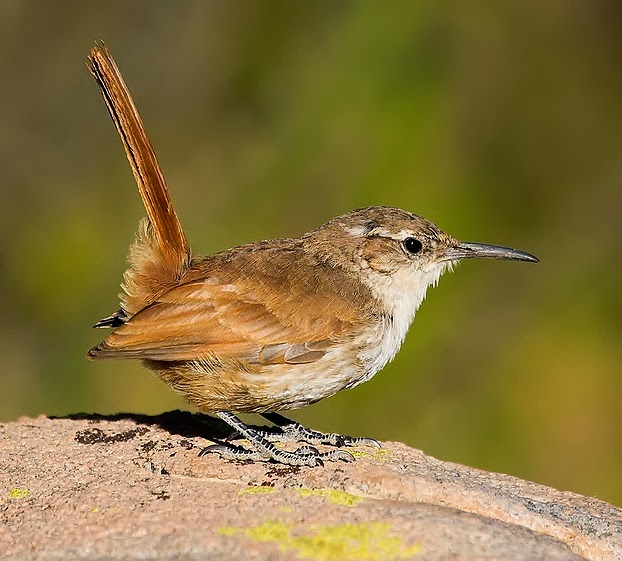 |
| Photo by Glenn Seeholzer (Flickr) |
Common name:
straight-billed earthcreeper (en); andarilho-de-bico-direito (pt); upucerthie à bec droit (fr); bandurrita de pico recto (es); geradschnabel-erdhacker (de)
Taxonomy:
Order Passeriformes
Family Furnariidae
Range:
This species is found along the eastern slopes of the Andes, from southern Peru and Bolivia to eastern Chile and western Argentina as far south as Comodoro Rivadavia.
Size:
These birds are 16-19 cm long and weigh 28-41 g.
Habitat:
The straight-billed earthcreeper is found in rocky slopes and ravines, and dry mountain scrublands, at altitudes of 1.300-4.300 m.
Diet:
They forage on the ground and among rock crevices, taking various insects including larvae and eggs.
Breeding:
Straight-billed earthcreepers breed in December-March. they are mostly monogamous and can mate for life. They nest in natural cavities at the end of a short tunnel, in a bank or rocky crevice. the nest chamber is lined with grasses, hairs and feathers. The female lays 2 whitish eggs which are incubated by both parents for 15 days. The chicks are fed by both parents and fledge 2 weeks after hatching.
Conservation:
IUCN status – LC (Least Concern)
This species has a very large breeding range and is described as fairly common. The population seems to be fairly stable, although some declines are suspected due to ongoing habitats degradation through overgrazing.







